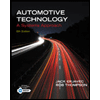
Automotive Technology: A Systems Approach (MindTap Course List)
6th Edition
ISBN: 9781133612315
Author: Jack Erjavec, Rob Thompson
Publisher: Cengage Learning
expand_more
expand_more
format_list_bulleted
Concept explainers
Textbook Question
Chapter 11, Problem 3ASRQ
Technician A says that a cylinder wall with too smooth a surface will prevent the piston rings from seating properly. Technician B says that a cylinder wall should have a crosshatch honing pattern. Who is correct?
- Technician A
Expert Solution & Answer
Trending nowThis is a popular solution!

Students have asked these similar questions
Technician A says that a cylinder wall with too smootha surface will prevent the piston rings from seatingproperly. Technician B says that a cylinder wall shouldhave a crosshatch honing pattern. Who is correct?a. Technician Ab. Technician Bc. Both A and Bd. Neither A nor B
Why is it important to loosen the cylinder head bolts in the recommended order?
The piston rings are used to act as a seal between the piston and cylinder head
a.
FALSE
b.
TRUE
Chapter 11 Solutions
Automotive Technology: A Systems Approach (MindTap Course List)
Ch. 11 - Explain how to use a micrometer to measure cam...Ch. 11 - What is the cylinder taper?Ch. 11 - Describe how to measure main bearing oil...Ch. 11 - Where does maximum cylinder bore wear occur and...Ch. 11 - What type of valve lifter automatically...Ch. 11 - List three types of compression rings.Ch. 11 - Most pistons used today are made of. cast iron...Ch. 11 - Cam bearings in OHV engines are typically which...Ch. 11 - Which of the following is not of concern when...Ch. 11 - True or False? Cylinder taper is the difference in...
Ch. 11 - What is the purpose of a thrust main bearing?Ch. 11 - Each halt' of a split bearing is made slightly...Ch. 11 - Prob. 13RQCh. 11 - Prob. 14RQCh. 11 - Which type of oil ring is slotted so that excess...Ch. 11 - When removing the balance shaft assembly:...Ch. 11 - After installing cam bearings: Technician A checks...Ch. 11 - Technician A says that a cylinder wall with too...Ch. 11 - Technician A uses a pry bar to stretch the timing...Ch. 11 - Technician A installs a cup-type core plug with...Ch. 11 - Technician A uses a micrometer to measure the...Ch. 11 - Technician A says that piston ring end gaps should...Ch. 11 - Technician A checks crankshaft oil clearance with...Ch. 11 - When removing the piston and rod assemblies from a...Ch. 11 - Technician A says that crankshaft counterweights...
Knowledge Booster
Learn more about
Need a deep-dive on the concept behind this application? Look no further. Learn more about this topic, mechanical-engineering and related others by exploring similar questions and additional content below.Similar questions
- Technician A says that piston ring end gaps should be the same for each ring on a piston. Technician B says that piston ring end gaps should be aligned before installing the piston into its bore. Who is correct? Technician A Technician B Both A and B Neither A nor Barrow_forwardWhile discussing what affects the amount of pressure exerted by the brakes: Technician A says that the shorter the line, the more pressure there will be. Technician B says that braking force will increase if the size of the pistons in a master cylinder are increased. Who is correct? Technician A only Technician B only Both A and B Neither A nor Barrow_forwardWhile discussing the common causes for cracks developing in a cylinder block or head: Technician A says that the chilling of a hot engine by a sudden rush of cold water or air over the surf ace may cause cracking. Technician B says that excessive overheating is a common cause. Who is correct? Technician A Technician B Both A and B Neither A nor Barrow_forward
- Technician A says that crankshaft counterweights offset the weight of the connecting rods and pistons. Technician B says that crankshaft counterweights are used to dampen crankshaft torsional vibrations. Who is correct? Technician A Technician B Both A and B d. Neither A nor Barrow_forwardWhen removing the piston and rod assemblies from a cylinder block; Technician A positions the throw of the crankshaft at the top of its stroke and removes the connecting rod nuts and cap. Technician B covers the rod bolts with protectors and pushes the piston and rod assembly out with the wooden hammer handle or wooden drift and supports the piston as it comes out of the cylinder. Who is correct? Technician A Technician B Both A and B Neither A nor Barrow_forwardWhile discussing the reasons for resurfacing a cylinder head; Technician A says it should be resurfaced to make it flat and very smooth so the head gasket can seal properly during engine assembly. Technician B says that it can be resurfaced to raise the compression. Who is correct? Technician A Technician B Both A and B Neither A nor Barrow_forward
- Which of the following is not of concern when checking a piston? Diameter Surface finish Groove wear Pin boss wobblearrow_forwardWhy are more number of thin piston rings preferred over small number of thick rings? Need proper Answer.arrow_forwardWhy are wear rings used on cylinder pistons?arrow_forward
- Technician A says that flare nut or line wrenches should be sued to loosen or tighten brake line or tubing fittings Technician B says that open-end wrenches will surround the fitting's nut and provide a positive grip on the fitting. Who is correct? Group of answer choices Technician A only Technician B only Both Technicians A and B Neither A nor Barrow_forwardWhat should be done to remove rust, corrosion, pitting, and scratches from the piston bore?arrow_forwardWhere does maximum cylinder bore wear occur and whyarrow_forward
arrow_back_ios
SEE MORE QUESTIONS
arrow_forward_ios
Recommended textbooks for you
 Automotive Technology: A Systems Approach (MindTa...Mechanical EngineeringISBN:9781133612315Author:Jack Erjavec, Rob ThompsonPublisher:Cengage Learning
Automotive Technology: A Systems Approach (MindTa...Mechanical EngineeringISBN:9781133612315Author:Jack Erjavec, Rob ThompsonPublisher:Cengage Learning Automotive TechnologyMechanical EngineeringISBN:9781337794213Author:ERJAVEC, Jack.Publisher:Cengage,
Automotive TechnologyMechanical EngineeringISBN:9781337794213Author:ERJAVEC, Jack.Publisher:Cengage,

Automotive Technology: A Systems Approach (MindTa...
Mechanical Engineering
ISBN:9781133612315
Author:Jack Erjavec, Rob Thompson
Publisher:Cengage Learning

Automotive Technology
Mechanical Engineering
ISBN:9781337794213
Author:ERJAVEC, Jack.
Publisher:Cengage,
Pressure Vessels Introduction; Author: Engineering and Design Solutions;https://www.youtube.com/watch?v=Z1J97IpFc2k;License: Standard youtube license